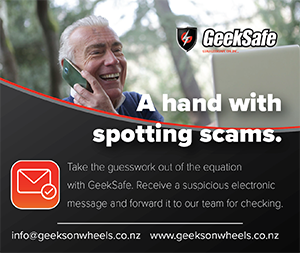Let’s be clear, the rules on e-bikes in New Zealand are not the same as the USA, Australia, Europe or the United Kingdom. So whatever a distributor of bikes from elsewhere tells you is probably wrong. Even some of the locally designed ranges spread incorrect information. So, what are the facts?
- There is no speed limit other than the limit posted on the road.
- Power is limited to 300W.
- Most places you can ride are considered roads.
- Electric kick scooters are not bikes.
You can read all about it on the NZTA website www.nzta.govt.nz/vehicles/vehicle-types/low-powered-vehicles/
You must wear a helmet when riding a bike, and your bike must have good brakes. You must also have the correct lights and reflectors for the conditions you are riding in.
A bike helmet will only protect your head once. If it is dropped or involved in a crash, inspect it for small cracks, inside and out. Damaged helmets should be replaced. 60 to 74-year-olds have most e-bike injury claims.
The number of e-bike-related ACC claims has risen five-fold in five years and last year cost more than $4 million.
The latest year with available data, 2021, shows 60 to 64-year-olds had the highest crash rate nationwide, with 161 claims. This was closely followed by 65 to 69-year-olds with 151 and 70 to 74-year-olds with 143 claims. ACC statistics also show spinal and back injuries are more common for e-bike riders than any other type of bike.
Take a course
ACC injury prevention leader James Whitaker said the best advice for riders new to e-bikes was to take a course. “E-bikes can go pretty quickly so start slowly then ease into it. They’re very different to traditional bikes. Practice in a quiet spot without traffic until you’re feeling more confident.”
Your helmet must fit properly and be designed for use as a bike helmet. Motorbike, climbing or horse riding helmets are not suitable. If you carry any passengers on your bike on and off-road, they must wear a helmet too. Lights and reflectors help you be seen.
You must use lights between sunset and sunrise, and at any other time when you can’t clearly see a person or vehicle about the length of a football field.
Point the light slightly downwards so you don’t dazzle other road users. Lights on your bike should be bright enough to be seen from 200 metres away at night. Only one front (white or yellow) light may flash. Any rear (red) light may flash.
All bikes must have a red or yellow reflector facing backwards. You must also have pedal reflectors when riding between sunset and sunrise, and at any other time when you need lights. Wear reflective material. Reflective bands on your arms can help drivers see your hand signals.
Secure e-bike parking coming to Kapiti
The first of two free, secure bike racks with charging stations for e-bikes and e-scooters planned for Paraparaumu is installed in front of Kāpiti Coast Council’s service centre on Rimu Road.
“Council encourages people to use active transport modes for short journeys, but we know e-bike security can be a worry for people and a barrier for them using their bike,” says Council’s Acting Group Manager Place & Space, Mike Mendonca. Called a Locky Dock station, another is being installed as part of the Paraparaumu Transport Hub upgrade.





